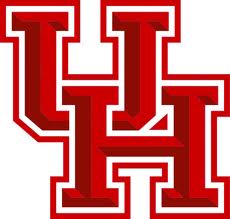Flows on manifolds
Contributors and Collaborators:
Thomas Jankuhn (RWTH Aachen)
Annalisa Quaini (University of Houston)
Arnold Reusken (RWTH Aachen)
Vladimir Yushutin (UMD)
Alexander Zhiliakov (UH)
Surface fluidity is an important phenomena, which occurs in material interfaces such as cell membranes or lipid bilayer (in biology the phenomenon is known as membrane viscosity or membrane fluidity. Conservation of momentum and mass for a thin material layer, the inextensibility condition, together with the Boussinesq-Scriven constitutive law for the surface stress tensor, lead to the surface Navier-Stokes type system on evolving closed smooth $\Gamma(t)$: \begin{align*} \rho \dot{\mathbf{u}} & =- \nabla_\Gamma \pi + 2\mu \mbox{div}_\Gamma (\nabla_\Gamma\mathbf{u}+\nabla_\Gamma\mathbf{u}^T) + \mathbf{b} + \pi \kappa\mathbf{n}, \\ \mbox{div}_\Gamma \mathbf{u} & =0, \end{align*} where $\mathbf{u}$ is the smooth velocity field of the density flow on $\Gamma$, $\dot{\mathbf{u}}$ is its material derivative, $\mu >0$ is the constant interface shear viscosity, $\pi$ is the surface pressure, $\mathbf{n}$ is the outward normal on $\Gamma$, $\mathbf{b}$ accounts for external area forces and bending elastic forces, and $\kappa$ is the doubled mean curvature; see [1] for further notation and derivation. The system is closed by the kinematic condition for the interface $\Gamma$ normal velocity $V_{\Gamma}=\mathbf{u}\cdot\mathbf{n}$.
On a stationary $\Gamma$ the system simplifies to \begin{align*} \frac{\partial\mathbf{u}}{\partial t}+ (\nabla_\Gamma\mathbf{u})\mathbf{u} - \mathbf{P} \mbox{div}_\Gamma (\nabla_\Gamma\mathbf{u}+\nabla_\Gamma\mathbf{u}^T)+\nabla_\Gamma p &= \mathbf{f}\\ \mbox{div}_\Gamma \mathbf{u}& =g \\ \mathbf{u}\cdot\mathbf{n} & =0 \end{align*} Surface fluid flows governed by this system can be efficiently computed with the help of TraceFEM; see [2-5] for simulations and analysis.
Examples of fluid flows on surfaces computed with TraceFEM
The Kelvin - Helmholtz instability development on 2:1 torus
The bibliography
- Th. Jankuhn, M.A. Olshanskii, A. Reusken,
Incompressible fluid problems on embedded surfaces: Modeling and variational formulations,
Interfaces and Free Boundaries V. 20 (2018), 353-377,
pdf-file;
- M. Olshanskii, A. Quaini, A. Reusken, V. Yushutin, A finite element method for the surface Stokes problem, SIAM J.Sci.Comp. V. 40 (2018), A2492-A2518 pdf-file;
- M. Olshanskii, V. Yushutin,
A penalty finite element method for a fluid system posed on embedded surface,
Journal of Mathematical Fluid Mechanics, V. 21 (2019), 14-31;
pdf-file;
- M. Olshanskii, A. Reusken, A. Zhiliakov,
Inf-sup stability of the trace P2-P1 Taylor-Hood elements for surface PDEs,
Mathematics of Computation
doi:10.1090/mcom/3551,
pdf-file;
- T. Junkuhn, M. Olshanskii, A. Reusken, A. Zhiliakov,
Error analysis of higher order trace finite element methods for the surface Stokes equations,
Journal of Numerical Mathematics, doi:10.1515/jnma-2020-0017 ,
pdf-file;
- M. Olshanskii, A. Zhiliakov,
Recycling augmented Lagrangian preconditioner in an incompressible fluid solver,
pdf-file;
**Current support acknowledgment: NSF through the Division of Mathematical Sciences grant 2011444.
**Former support acknowledgment: NSF through the Division of Mathematical Sciences grant 1717516.
| Address:
Department of Mathematics University of Houston 651 PGH Houston, Texas 77204 tel:+1-713-743 3500 email: molshan (at) math.uh.edu |



|